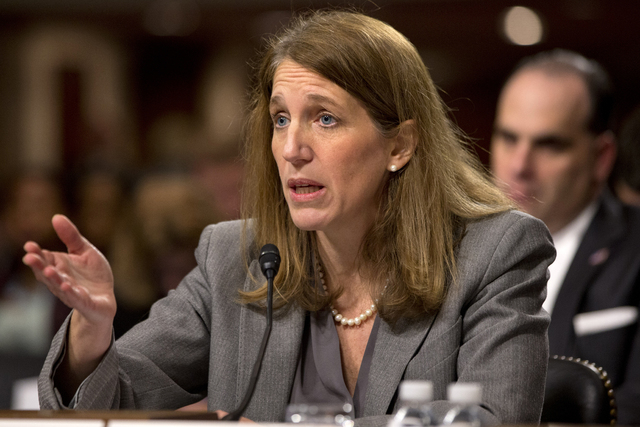Premiums for Obamacare will increase next year

WASHINGTON — Many people covered under President Barack Obama’s health care law will face higher premiums next year, the administration acknowledged Thursday. While the average increases are modest, it’s more fodder for the nation’s political battles over health care.
Officials stressed that millions of current HealthCare.gov customers can mitigate the financial hit if they’re willing to shop around for another plan in a more competitive online marketplace. Subsidies also will help cushion the impact.
It’s currently taking an average of 30 minutes for returning customers to update their coverage.
Premiums for the most popular type of plan are going up an average of 5 percent in the 35 states where the federal government is running the health insurance exchanges, said a report from the Health and Human Services Department.
Monthly premiums are one of the most important and politically sensitive yardsticks for Obama’s health care law, which offers subsidized private insurance to people who don’t have access to coverage through their jobs. Sharper premium hikes were common before it passed.
The modest average increases reported for 2015 mask bigger swings from state to state, and even within regions of a state. According to data released by the administration, some communities will still see double-digit hikes while others are seeing decreases. Most are somewhere in the middle.
“Prior to the Affordable Care Act taking place, we saw double-digit increases in health care costs in this country,” said White House spokesman Josh Earnest. “Those were routine.”
Many people who go back to the website “will now find that their costs are limited to only 5 percent on average,” he said, “a much lower cost increase than was in place before the Affordable Care Act.”
Even after Thursday’s report, the bottom line remains blurry.
Last year, the administration released its analysis of premiums before the start of open enrollment season. This year’s snapshot came more than two weeks after sign-ups had started and covered 13 fewer states. Among the missing states were two of the largest, California and New York.
Last year’s report provided average premiums for three types of plans across 48 states — close to a national number. This year’s report has no comparable statistic.
With both chambers of Congress under Republican control next year, the health care law will face even closer scrutiny from opponents still pursuing its repeal.
Nonetheless, industry experts said the picture appears positive for consumers and the administration.
“Benchmark premiums going into year two of the health law are very stable nationally, driven largely by strong competition among insurers,” said Larry Levitt of the nonpartisan Kaiser Family Foundation. “How the law is playing out varies quite a bit across the country, with premiums increasing in some areas but actually going down in other places, which is almost unheard of.”
Administration officials said that on the whole, the market for individual insurance has gotten better for consumers.
“In today’s marketplace, issuers are competing for business,” Health and Human Services Secretary Sylvia M. Burwell said in a statement. “Returning customers may find an even better deal if they shop and save.”
The administration says about two-thirds of current customers can still find coverage comparable to what they have now for $100 a month or less if they shop. That estimate takes into account the tax credits that most consumers receive, which cover about three-fourths of their premiums on average.
Also, 91 percent of customers will have a choice of three or more insurers this year, with each company usually offering a range of plans. That’s a notable improvement from last year, when 74 percent of customers had similar options.
The most popular coverage, known as the lowest cost silver plan, will go up 5 percent next year across the 35 states included in the administration’s analysis. The second-lowest cost silver plan — the benchmark the government uses to set subsidy levels — will go up an average of 2 percent.
Tax credits are based on a person’s income and the premium for the second-lowest cost silver plan in their community. The slow premium growth for the second-lowest cost silver plans is also good news for taxpayers who are subsidizing the program.
Open enrollment season for 2015 is now in its third week and runs through Feb. 15. The next big deadline for consumers is Dec. 15, the date by which new customers must sign up if they want their coverage to take effect on Jan. 1. For current customers, it’s the deadline to make changes and updates that would take effect Jan. 1.
Current customers who do nothing will be automatically renewed in the plan they have now on Jan. 1. But with all the changes in premiums for 2015, administration officials and consumer advocates are urging people to come back and shop.
“The vast majority of people, if they stay in the same plan, they will see rate increases in the single digits to high single digits,” said Andy Slavitt, a top official overseeing technology and management issues.
The administration has set a goal of 9.1 million people enrolled in 2015, including most of the current 6.7 million customers.


















